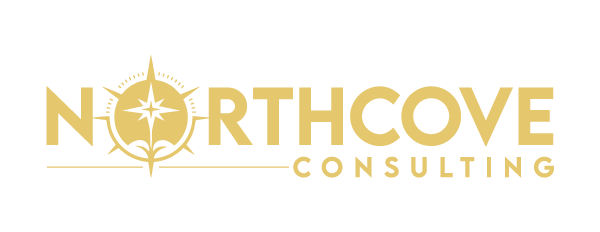
How to Create an Effective Employee Benefits Communication Plan
Your company has been spending months designing what you believe is an outstanding benefits package. The employee benefits communication plan includes healthcare, generous retirement matching, flexible spending accounts, and even some unique perks, such as pet insurance. However, when the enrollment time comes around, you notice many employees simply default to last year’s choices, or worse, they don’t enroll at all. The problem isn’t with the benefits themselves, but with how they’re being communicated.
The truth is that even the most valuable employee benefits communication plan becomes meaningless if employees don’t understand it. A recent survey by the International Foundation of Employee Benefit Plans found that nearly 60% of workers do not fully utilize their benefits. These actions lead to poor utilization and wasted investment. This communication gap represents a massive missed opportunity for organizations. They can use this opportunity to demonstrate their commitment to employee well-being.
The High Cost of Poor Benefits Communication
When benefits communication falls short, the consequences spread throughout an organization. Employees who do not understand their benefits sometimes feel undervalued and disengaged from the company. They might miss out on some areas where compensation consulting services could provide strategic alignment between your benefits offering and employee needs. Missing these spaces can create financial stress that follows them home and back to work.
To gain a better understanding, consider the case of a mid-sized tech company that has implemented a mental health benefit that aligns with the modern definition. Despite spending thousands on the employee benefits communication plan, utilization remained shockingly low. After conducting employee interviews, they discovered that most workers simply did not know the benefit existed. The information had been buried in a dense PDF that few ever opened.
This scenario plays out in companies every day. Benefits show a very important portion of compensation. In most cases, 30% or more of total employee expenses are allocated to communication. But many organizations treat it as an afterthought. It results in employees making uninformed decisions. Additionally, companies that fail to see a return on their investment in benefits ultimately lose, and everyone loses.
Understanding What Employees Really Need
The first step toward better communication is understanding how to communicate employee benefits effectively in ways your workforce actually wants to receive information. Traditional methods, such as lengthy policy documents and one-time enrollment meetings, are no longer effective for today’s diverse workforce.
Different generations in the workplace have distinct preferences. While baby boomers might appreciate printed materials and in-person meetings, millennials and Gen Z employees typically prefer digital formats they can access on their phones. Busy working parents need information they can consume in short bursts, while remote workers require options that don’t depend on being in the office. This is especially important when sharing key information, like helping employees understand what is a total compensation statement and why it matters.
The most effective approach starts with listening. Conduct anonymous surveys to ask employees how they prefer to receive information about benefits. Track which communication methods generate the most engagement. Notice which benefits questions keep coming up in HR inquiries. This data provides the foundation for an employee benefits communication strategy that actually reaches the intended audience.
Building a Year-Round Employee Benefits Communication Plan
Many companies make the mistake of treating benefits communication as a once-a-year event centered around open enrollment. This approach makes it certain that employees will not feel rushed when given a short timeframe to make all their decisions.
Instead, think of benefits communication as an ongoing conversation. A well-designed employee benefits rollout plan includes touch points throughout the entire year, each with a specific purpose. Early in the year, focus on educating employees about benefits they may have overlooked. Mid-year communications can highlight wellness programs or remind employees about flexible spending account balances. As enrollment approaches, shift to helping employees prepare to make their selections.
This continuous approach prevents information overload, allowing employees time to properly understand their options. It also reinforces the message that benefits aren’t just paperwork to complete, but valuable resources available year-round. You can always start with an HR benefits communication template to ensure consistency across all touchpoints, saving development time.
Creating Multiple Pathways to Understanding
People learn in different ways, which means effective employee benefits communication requires multiple formats. While some employees will carefully read every word of an email, others will skim or delete it immediately. Some prefer to watch a video, while others want to discuss options with a colleague.
What Employee Benefits Communication Plan Should Include
- Concise written materials for those who prefer to read.
- Short videos or animations for visual learners.
- In-person or virtual Q&A sessions for people who learn through discussion.
- Interactive tools, such as benefits calculators, that allow for personalization.
- Peer sharing opportunities where employees can learn from colleagues.
The most successful organizations treat benefits education like marketing – they know their audience and deliver the right message through the right channels at the right time.
Measuring What Works (And What Doesn't)
Too many benefits of communication efforts operate on the “set it and forget it” principle. Materials get created, meetings get scheduled, and everyone assumes the job is done. However, without measurement, there is no way to know if the internal communication for employee benefits is actually effective.
For organizations seeking support, it is recommended that they partner with a total rewards consulting company, as this can provide the expertise needed to develop data-driven measurement strategies that demonstrate a return on investment (ROI).
Smart organizations track specific metrics to evaluate their communication efforts:
- Enrollment rates for various benefits compared to those of previous years.
- Participation in educational sessions and views of online materials.
- Survey results measuring employee understanding and satisfaction.
- HR helpdesk inquiries about benefits (are they increasing or decreasing?)
- Utilization rates for various programs.
This data provides invaluable insights. If a particular benefit has low enrollment despite extensive communication, the problem might be with the employee benefits communication plan rather than the messaging. If certain communication methods show consistently low engagement, they can be modified or replaced.
Channel Comparison & Benefits Communication Best Practices
Communication Channel | Best For | Advantages | Limitations | Implementation Tips |
Email Newsletters | Routine updates, enrollment reminders | – Wide reach – Trackable open rates – Cost-effective | – Easy to ignore – Information overload risk | – Use clear subject lines – Segment by employee needs – Include 1-2 key messages max |
Short Explainer Videos | Complex topics (health plans, employee benefits engagement plan) | – 65% better retention than text – Mobile-friendly – Easy to share | – Production time/cost – Requires a hosting platform | – Feature real employees – Add captions – Host on intranet & YouTube |
In-Person Q&A Sessions | High-stakes decisions, anxious employees | – Builds trust – Immediate feedback – Personal connection | – Scheduling challenges – Lower attendance for remote staff | – Record sessions for later viewing – Provide anonymous question submission |
Interactive Decision Tools | Healthcare elections, retirement planning | – Personalized guidance – Reduces decision paralysis – Available 24/7 | – Development cost – Requires IT support | – Link to the real enrollment system – Mobile-optimize – Test with employee focus groups |
Peer Ambassador Program | Reluctant engagers, cultural adoption | – Authentic storytelling – Psychological safety – Informal learning | – Training required – Volunteer dependent | – Recruit diverse ambassadors – Provide talking points – Recognize participation |
Conclusion
When benefits communication works well, the positive effects extend far beyond enrollment forms and utilization rates. The same principle applies to your sales compensation strategy. It is a clear communication that transforms complex programs into powerful engagement tools.
Employees who understand and appreciate their benefits develop stronger connections to their employer. They feel valued and supported, which translates into higher engagement and productivity.
Many organizations invest heavily in competitive benefits packages, only to see them underutilized because employees do not fully understand or appreciate the value of these benefits. Northcove Consulting specializes in turning challenges into opportunities. Crafting a strategic employee benefits communication plan that ensures that your benefits deliver real value to both your employees and your bottom line.
For a consultation, please reach out to [email protected] or call (877) 595-3087, as your workforce and benefits investment deserve to work harder for you.
Frequently Asked Questions
Why does benefits communication matter if we already have great benefits?
Even the best employee benefits communication plan fails if employees don’t understand it. Clear communication transforms your investment from paperwork to perceived value, boosting engagement and utilization.
How frequently should we discuss benefits?
Year-round, not just at enrollment. Regular touchpoints (monthly or quarterly) prevent overwhelm and keep benefits top of mind when life events occur.
What does a total compensation statement mean?
A total compensation statement is a personalized document that shows employees the complete value of their compensation package, encompassing not only salary but also benefits and other perks.
Are emails enough for benefits communication?
Rarely. Mix videos, quick guides, and live Q&As; different people absorb information in various ways.
How do we know if our communication works?
Track both hard metrics (enrollment changes) and soft signals (fewer HR helpdesk questions, more peer discussions).
Related Posts
How Compensation Benchmarking Tools Help HR Make Data Driven Pay Decisions
How Compensation Benchmarking Tools Help HR Make Data Driven Pay Decisions Today’s changing work environment…
Employee Handbook Best Practices Every Small Business Should Follow
Employee Handbook Best Practices Every Small Business Should Follow An HR management consulting company recognizes…
How an Interim Total Rewards Consultant Can Optimize Your Compensation Strategy Fast
How an Interim Total Rewards Consultant Can Optimize Your Compensation Strategy Fast When companies face…
How to Build Effective Total Rewards Communication Strategies That Employees Understand
How to Build Effective Total Rewards Communication Strategies That Employees Understand Employees want to feel…







